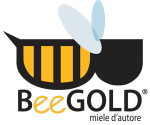Beegold production is distinguished on continuous improvement of product innovation and quality
Traditional bee-keeping:
only bio-mechanical technics and natural products are used to control diseases; some of them are crucial to preserve the quality of the honey, such as the correct placement of hives, the maintenance of stronger families or recurrent honeycomb replacement.
During winter-time, bees are not active for the honey production but when bloom season is coming, it becomes important the choice of the best area, hives positioning and specific equipment for collecting of supers. We are using safe colors for hives painting.
Bee transhumance:
We move bees during the blooming season, looking for uncontaminated places and high-quality nectar; transhumance will also protect the honey season, ensure increasing of production, and allows to have several varieties of honey.
Bee transhumance consists in moving the hives according to the presence of nectar plants; it’s very flexible during the season, starting from the early blossoming in March and following the late ones in June, July.
Thanks to this old method we can preserve bees but also ensure the fruit trees pollination.
Cold honey production process:
In our laboratory we carried out the cold honey processing to preserve natural features of the honey. When the bees have collected nectar, it is turned into honey on the frames. Frames are collected to the laboratory to proceed with the uncapping the combs with a special machine to eliminate the wax. The honey extraction is realized by centrifuging frames, so honey is released from cells.
The fresh honey is then stored into stainless steel containers where it is left to decant for about twenty days. Decanting leads to the air separation formed during honey extraction, by specific weight difference.

